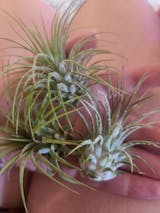
Combatting Seasonal Affective Disorder with Houseplants
Share
As the days grow shorter and the temperatures drop, many people find themselves feeling a bit down. This phenomenon, known as Seasonal Affective Disorder (SAD), affects millions of individuals each year. But did you know that houseplants can be a powerful ally in combating these winter blues? Let’s explore how bringing a bit of greenery into your home can help lift your spirits during the colder months.
Understanding Seasonal Affective Disorder (SAD)
Seasonal Affective Disorder is a type of depression that occurs at a specific time of year, usually in the winter. Symptoms can include fatigue, depression, hopelessness, and social withdrawal. The reduced level of sunlight in fall and winter can disrupt your body’s internal clock and lead to feelings of depression.
The Healing Power of Houseplants
Houseplants do more than just beautify your home—they can also have a profound impact on your mental health. Here are some ways houseplants can help alleviate the symptoms of SAD:
-
Improving Air Quality: Plants naturally filter toxins from the air, creating a healthier indoor environment. Cleaner air can lead to better overall health and improved mood.
-
Boosting Mood: Studies have shown that being around plants can reduce stress levels and boost your mood.Caring for plants can also impart a sense of purpose and a feeling of accomplishment.
-
Increasing Humidity: Many houseplants release moisture into the air, which can help combat the dryness of indoor heating systems. Higher humidity levels can improve respiratory health and skin hydration, contributing to overall well-being.
-
Boosting Focus and Efficiency: Introducing plants into your home or office can enhance focus and increase productivity by as much as 15%.This can be particularly beneficial if you find it hard to stay focused during the darker months.
-
Connecting with Nature: Introducing elements of nature into your home can foster a deeper connection with the environment, offering a sense of tranquility, especially during the winter when opportunities to spend time outside are reduced.
Best Houseplants for Combating SAD
While any plant can bring joy, some are particularly effective at improving indoor air quality and boosting mood. Here are a few recommendations:
- Snake Plant (Sansevieria): Known for its air-purifying qualities, the Snake Plant is also incredibly low-maintenance.
- Peace Lily (Spathiphyllum): This plant not only purifies the air but also adds a touch of elegance with its beautiful white flowers.
- Spider Plant (Chlorophytum comosum): Easy to care for and great at removing toxins from the air.
- Aloe Vera: Besides its air-purifying abilities, Aloe Vera can also be used for its soothing gel.
- English Ivy (Hedera helix): Excellent for improving air quality and adding a touch of greenery to your home.
Tips for Caring for Your Houseplants
To get the most benefit from your houseplants, it’s important to care for them properly:
- Light: Most houseplants prefer bright, indirect light. Make sure to place them near windows but out of direct sunlight.
- Water: Overwatering is a common mistake. Allow the soil to dry out between waterings, and ensure your pots have good drainage.
- Humidity: Many houseplants thrive in high humidity. Consider misting your plants regularly or placing them near a humidifier.
- Temperature: Keep your plants in a stable environment, avoiding drafts and sudden temperature changes.
Conclusion
Incorporating houseplants into your home is a simple yet effective way to combat Seasonal Affective Disorder. Not only do they enhance the aesthetic appeal of your space, but they also offer numerous mental and physical health benefits. So, why not add a touch of green to your home this winter and let nature’s magic work its wonders?
Visit our website to explore a wide variety of houseplants that can help brighten your home and your mood. 🌿✨

